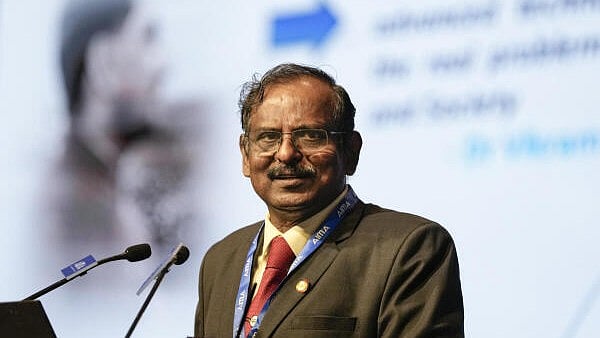
ISRO Chairman V Narayanan.
Credit: PTI
Bengaluru: The Gaganyaan mission is progressing steadily with nearly 90 per cent of the development work being completed, ISRO Chairman V Narayanan said on Thursday.
The Gaganyaan mission is India’s first human spaceflight mission under development.
"The Gaganyaan mission is going very well. In fact, when you talk about the Gaganyaan mission, a lot of technology development has to take place, you are aware — the rocket has to be human-rated, the orbital module has to be developed, and the environmental control safety system has to be developed. Then coming to the crew escape system, parachute system and then, of course, human-centric products," Narayanan said while responding to a question about the progress of the mission.
He was speaking to reporters on the sidelines of the promotional activities for the upcoming Emerging Science, Technology, and Innovation Conclave (ESTIC-2025), scheduled to be held from November 3 to 5 in New Delhi.
He said that approximately 90 per cent of the development work has been completed.
"Now three uncrewed missions have to be accomplished before going for the crewed mission and we are working towards it. In the first uncrewed mission, Vyommitra is going to fly and we are working towards that to accomplish the crewed mission by the beginning of 2027," he added.
On August 24, 2025, ISRO accomplished the first integrated air drop test for the Gaganyaan programme at the Satish Dhawan Space Centre in Sriharikota.
According to ISRO, this test successfully demonstrated the objective of end-to-end performance validation of the critical parachute-based deceleration system of the crew module for the Gaganyaan mission in one of the typical mission scenarios.
"For the Gaganyaan programme, the integrated air drop test — because when the entire module returns in the final phase almost nine parachutes have to work in a synchronised way for the proper splashdown — so we lifted off a simulated module using a helicopter to a height of around three kilometres above the Earth. Using nine parachutes, it was successfully splashed down," the ISRO Chairman said.